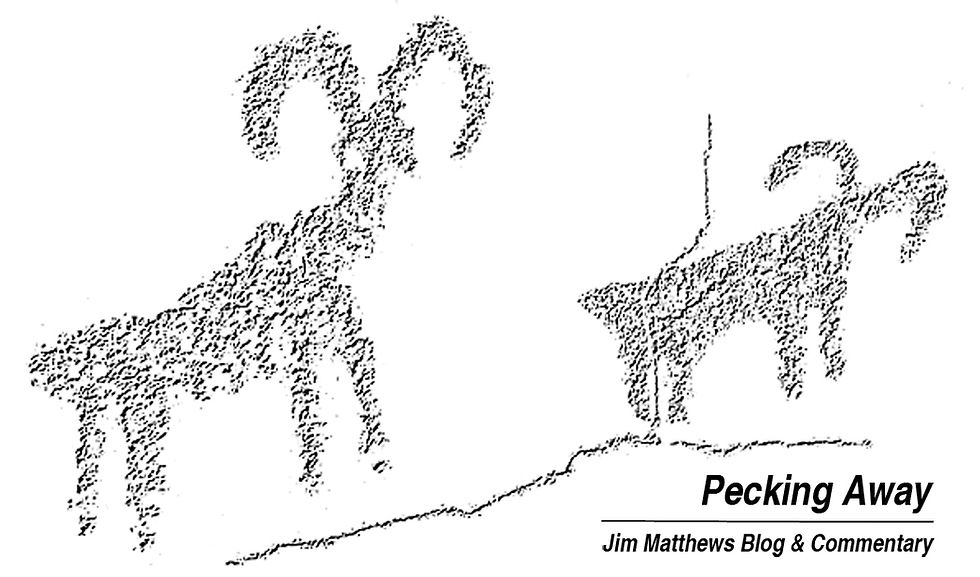WCB approves major expansion of Palo Verde Ecological Reserve
- Jim Matthews
- Feb 25, 2018
- 4 min read

By JIM MATTHEWS
www.OutdoorNewsService.com
The Palo Verde Ecological Reserve in Blythe, one of the most popular dove hunting spots for Southern California hunters each Sept. 1, will increase in size by 328 acres thanks to a purchased approved by the state Wildlife Conservation Board (WCB) Thursday this past week.
Most of the $7.34 million price tag for the property came from the U.S. Fish and Wildlife Service’s Pittman-Robertson (P-R) Fund (excise taxes paid on hunting guns and ammunition), but the purchase requires a non-federally funded matching source. The WCB added $1,865,000 to the $5.5 million from the P-R Fund money and approved the final purchase this past week.
The 328 acres is located right along the Colorado River (roughly between 6th and 8th Avenues), and it has approximately 3,200 feet of river frontage. Between state and federal ownership, nearly the entire river corridor on the California side from the north end of the valley where Highway 95 is immediately adjacent to the Colorado River to the south end of the ecological reserve off 2nd Avenue is in public ownership.
PVER was created from farmland purchases started in 2004, and many of the agricultural lands have been transformed with the plantings of native cottonwood, willow, mesquite, and ironwood on its 1,900 acres. The DWF has also created a number of wetland areas and enhanced a river backwater for native birds and waterfowl. Each year it grows foot plots that attract dove and hunters during the September season, but also other native wildlife throughout the year, including burro deer that have returned to the area after being absent for decades.
The newly-purchased property has been in alfalfa production under a lease agreement with the landowner who agreed to sell the property to the state, but that lease will terminate once the DFW takes over management of the land. However, the state DFW will retain the water rights managed by the Palo Verde Irrigation District (PVID) that are included in the property sale.
The water rights mean the DFW will be able to plant additional wildlife crops, create food plots, restore native riparian habitat, and create even more waterfowl wetlands and ponds, like it has done on other parts of PVER.
The property was once part of 7000-acre-plus residential development proposal called Crescent Shores that was proposed for the riverfront acreage. Now, the land is permanently protected in public ownership.
WCB ALSO APPROVES PURCHASE OF PALISADES RANCH: At the same meeting, the WCB also approved the $1.27 million purchase of the 1,640-acre-plus Palisades Ranch on the Mojave River just south of Helendale in the West Mojave Desert. The purchase will be made and the property managed by the Mojave Desert Land Trust (MDLT), with a grant for the money provided by the WCB.
Public access is allowed at most MDLT lands, but hunting is often not, the lands managed for their resource values above public use. Funding for this WCB grant comes from state and federal sources “that allows for the acquisition and protection of habitats that are critical to the sustainability of threatened and endangered species and to protect or enhance a flood protection corridor or bypass,” according to the WCB documentation. This property was purchased because it is habitat for the threatened desert tortoise and some threatened or endangered plant species that may occur on the property.
Volunteers are needed for
bighorn survey March 3-4
Volunteers are needed for the annual San Gabriel Mountain bighorn sheep survey conducted March 3-4 by the Department of Fish and Wildlife (DFW), U.S. Forest Service (USFW), and Society for the Conservation of Bighorn Sheep (SCBS).
Praying for better weather, the DFW staff is desperately hoping the weather will be better than the past two years when counts were incomplete. These surveys have been done nearly annually since 1979, most conducted with a combination of ground counts done by volunteers and a helicopter count done by DFW staff. The double count done at the same time allows the DFW to do very precise population estimates, but those estimates have been more like guesses without good data in recent years.
The San Gabriel Mountains once held an estimated 740 sheep, which made this the largest population of desert bighorn sheep in California. The counts showed the bighorn population declined more than 80 percent through the 1980s, down to a low of under 100 animals. The sheep numbers have been rebounding in recent years, and the estimate from the most recent surveys places the number at about 400 sheep, but the DFW is hoping for better weather this year to get more accurate data.
Volunteers need no survey experience, but they must attend an orientation meeting 6 p.m., Saturday, March 3, the Angeles National Forest Supervisor's Office in Arcadia.
For the Sunday, March 4, survey, volunteers will hike to designated observation sites to count and record bighorn sheep throughout the west end of the San Gabriel Mountains, with most of the counting done in the Lytle Creek and the canyons around Baldy Village.
All volunteer groups will be led by a representative from CDFW, USFS or SCBS. Participants must be at least 16 years old and capable of hiking at least one mile in rugged terrain (most survey routes are longer). In general, hikes will not be along trails and accessing survey points will involve scrambling over boulders, climbing up steep slopes, and/or bush-whacking through chaparral.
Volunteers are encouraged to bring binoculars or spotting scopes in addition to hiking gear. Mountain weather can be unpredictable and participants should be prepared to spend several hours hiking and additional time making observations in cold and windy weather. Volunteers will need to start hiking early Sunday morning.
Volunteers can sign up in advance online at www.sangabrielbighorn.org or by calling 909-584-9012.
END



















